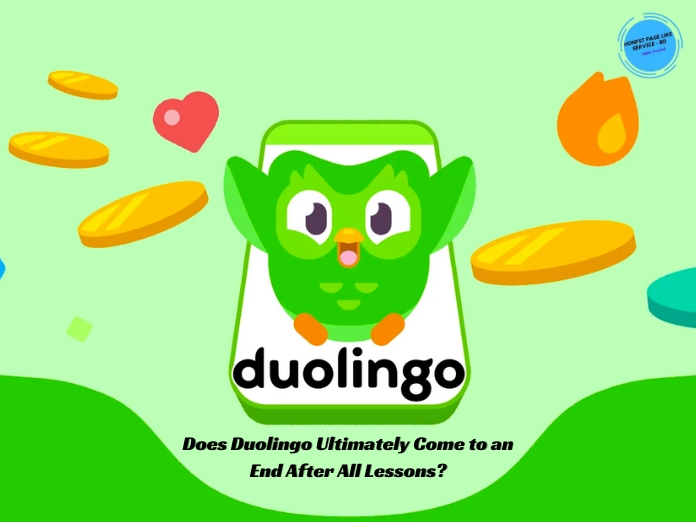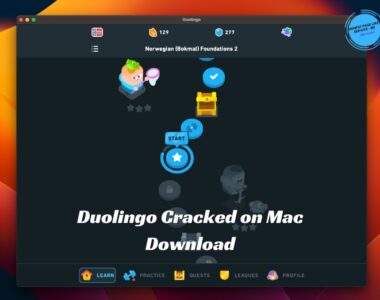
Learning a new language is a journey that never truly ends, and platforms like Duolingo are designed to help users stay engaged and consistent in their language-learning adventures. But one question that often arises from long-time users is: “Does Duolingo ultimately come to an end after all lessons?”
While Duolingo offers a structured curriculum, learning a language is much more complex than simply finishing lessons. This article will explore what happens once you’ve completed all the lessons on Duolingo, how the app continues to support your learning, and whether finishing all lessons means you’ve mastered the language. We’ll also delve into how to maximize Duolingo’s features to keep growing your language skills even after completing the course.
1. What Is Duolingo and How Does It Work?
Duolingo is one of the most popular language-learning platforms in the world, with millions of active users. Its gamified approach to learning makes it accessible and enjoyable for people of all ages and backgrounds. Duolingo offers courses in over 40 languages, ranging from widely spoken ones like Spanish, French, and German to less common languages like Navajo and High Valyrian.
How Duolingo Works:
- Lessons: The learning structure on Duolingo is built around short, engaging lessons that focus on vocabulary, grammar, speaking, listening, and reading.
- Gamification: The app uses game-like elements such as streaks, leaderboards, and in-app currencies (gems or lingots) to motivate users.
- Adaptive Learning: Duolingo tailors lessons based on your progress and performance, ensuring you stay challenged without feeling overwhelmed.
The app is designed to introduce learners to a language and help them reach a beginner-to-intermediate level, depending on the language and the effort the user puts into practice.
2. Overview of Duolingo’s Learning Structure
Duolingo’s courses are divided into skills, each focusing on specific aspects of a language, such as greetings, common phrases, food, travel, grammar structures, and verb conjugations. These skills are organized into lessons, which increase in difficulty as you progress.
- Skill Trees: Each language course has a skill tree, which is a visual representation of all the skills you need to complete. Skills are grouped into levels, and you unlock new skills as you move through the tree.
- Crown Levels: After completing a skill for the first time, you earn a crown. You can revisit the same skill multiple times to earn more crowns, which deepens your understanding of the topic.
- Checkpoints: These are milestones that divide the course into sections. Completing a checkpoint shows that you’ve mastered a large portion of the material in the previous section.
The structured progression keeps users motivated as they work their way through each lesson, earning crowns and achieving new levels of fluency.
3. Does Duolingo Come to an End After All Lessons?
The short answer is no, Duolingo doesn’t have a definitive end—at least not in the way traditional courses or textbooks do. While you can reach the “end” of a course in the sense that you finish all the lessons in the skill tree, Duolingo encourages continuous learning beyond that point.
Once you’ve completed all the lessons in a Duolingo course, the app doesn’t declare you finished or fluent. Instead, Duolingo offers various ways to keep practicing and advancing your language skills:
- Crown Levels: Completing the lessons at the base level only gives you one crown per skill. You can continue leveling up by revisiting skills to earn additional crowns (up to five per skill).
- Practice Mode: After finishing the course, the “Practice” button becomes even more important. It helps you review and reinforce what you’ve learned.
- Stories and Podcasts: Duolingo has additional features like Duolingo Stories and Podcasts, which are designed to enhance your comprehension skills and give you real-world language practice.
So, even though you may have completed all the lessons, Duolingo encourages users to view language learning as a lifelong process, not something with a clear ending.
4. What Happens When You Complete a Duolingo Course?
Once you’ve completed all the lessons in a Duolingo course, you’ll receive a congratulatory message, often accompanied by confetti or other celebratory animations. However, you’ll quickly realize that finishing the skill tree doesn’t mean Duolingo is over. Here’s what happens:
- You Reach the End of the Skill Tree: The skill tree will show that you’ve completed every lesson, but you can still revisit them to earn more crowns.
- The Option to Practice: The practice mode becomes your best friend as you work to reinforce what you’ve learned. Practicing keeps your skills sharp and helps you avoid forgetting key concepts.
- New Features: As Duolingo updates its platform, new skills or features may be added to the course, meaning that you can continue learning even after completing the initial lessons.
Finishing the course doesn’t mean you’ve mastered the language; it just means you’ve completed the structured lessons. The platform encourages you to keep practicing, reviewing, and expanding your language skills.
5. Duolingo’s Features Beyond Lessons
Duolingo offers several features that allow learners to continue improving their skills even after completing all lessons. These features include:
- Crown Levels: As mentioned earlier, each skill in Duolingo can be leveled up to five crowns. As you progress through the crowns, the lessons become more difficult, helping you deepen your understanding.
- Review Sessions: Duolingo’s algorithm periodically identifies areas where you might be struggling and prompts you to review those lessons. These sessions ensure that you don’t forget what you’ve learned.
- Duolingo Stories: Available in some languages, Duolingo Stories are short, interactive stories designed to improve your reading and listening comprehension. They use the vocabulary and grammar structures you’ve learned in the course and offer a fun way to continue practicing.
- Duolingo Podcasts: If you’re learning a popular language like Spanish or French, you can access Duolingo’s podcasts, which provide real-world listening practice through engaging, human-interest stories told in the target language.
- Leaderboards and Challenges: Duolingo’s gamified features continue even after completing the course. Weekly leaderboards, streaks, and time-based challenges can motivate you to keep practicing.
These features are designed to help you practice and reinforce what you’ve learned, as well as to introduce new content gradually.
6. How Duolingo’s Crown System Extends Learning
Duolingo’s crown system is one of the platform’s most effective ways to keep users engaged and learning beyond completing the basic lessons. Here’s how it works:
- First Crown: When you complete a skill for the first time, you earn the first crown. At this level, the lessons are basic and designed to introduce new concepts.
- Higher Crowns: As you continue practicing the skill, you can earn more crowns (up to five per skill). Each additional crown level increases the difficulty of the exercises, requiring you to demonstrate a deeper understanding of the vocabulary and grammar.
The crown system means that even after finishing a course, you’re encouraged to revisit lessons, challenge yourself, and reinforce your skills through more difficult exercises.
7. Duolingo Stories, Podcasts, and Events
In addition to the crown system, Duolingo has developed several other features to help learners continue practicing after completing the basic course:
- Duolingo Stories: These are short, interactive stories that require users to listen to conversations and answer questions. Available in languages like Spanish, French, and Portuguese, these stories cover a wide range of topics and situations that learners might encounter in real life.
- Duolingo Podcasts: Duolingo’s podcasts, available for languages like Spanish and French, offer an immersive listening experience. Each episode tells a captivating story while incorporating both the target language and English to aid comprehension.
- Duolingo Events: If you’re looking for more interactive learning experiences, Duolingo Events offers online and in-person language practice sessions. These events allow users to practice with others in a conversational setting.
These features provide learners with diverse ways to practice and reinforce their language skills, making the learning experience more immersive and dynamic.
8. How Duolingo Plus Enhances Learning After Finishing Lessons
If you’ve completed a Duolingo course and want to continue learning without any interruptions, Duolingo Plus is worth considering. Duolingo Plus is a premium subscription service that offers several benefits, including:
- No Ads: Enjoy an uninterrupted learning experience without ads.
- Unlimited Hearts: If you run out of hearts (Duolingo’s lives system) while making mistakes, Duolingo Plus allows you to keep






